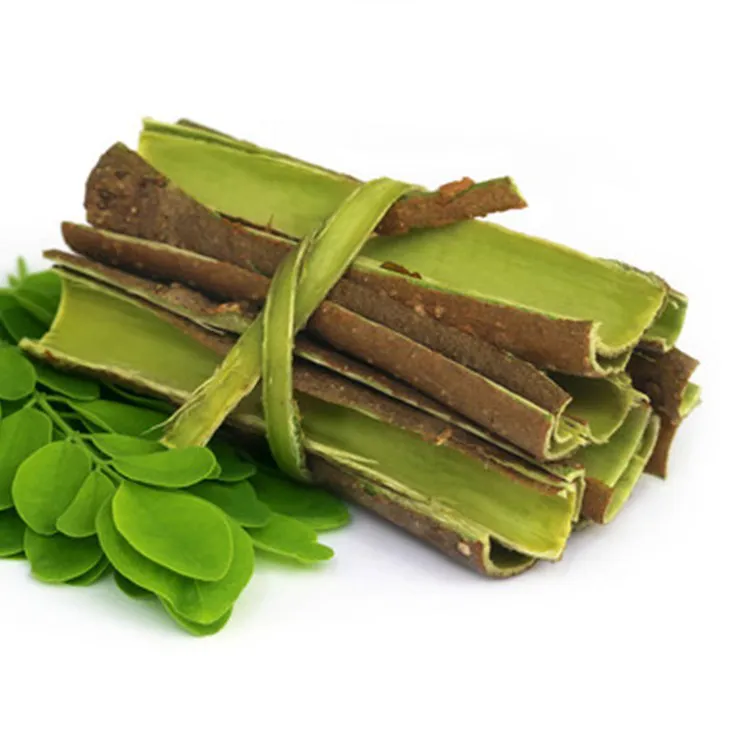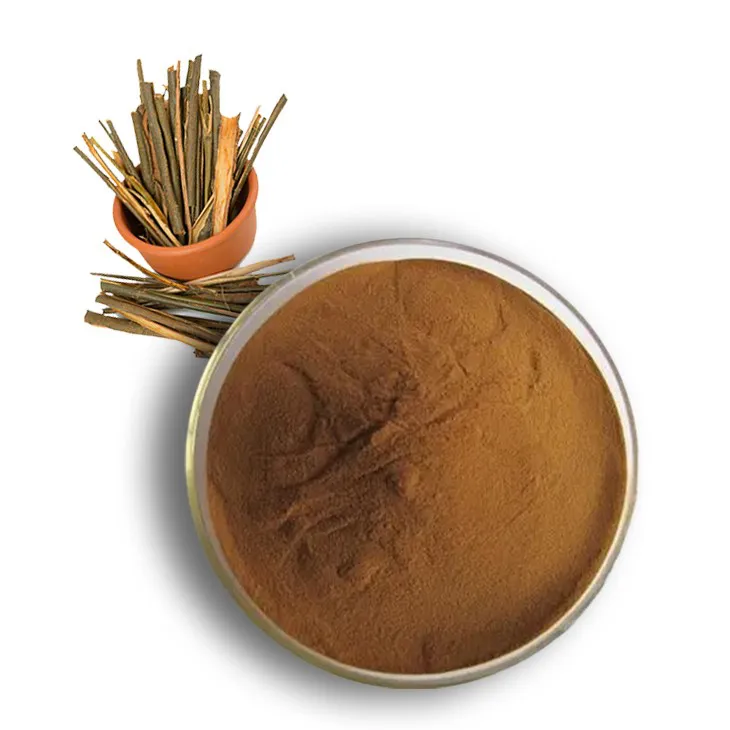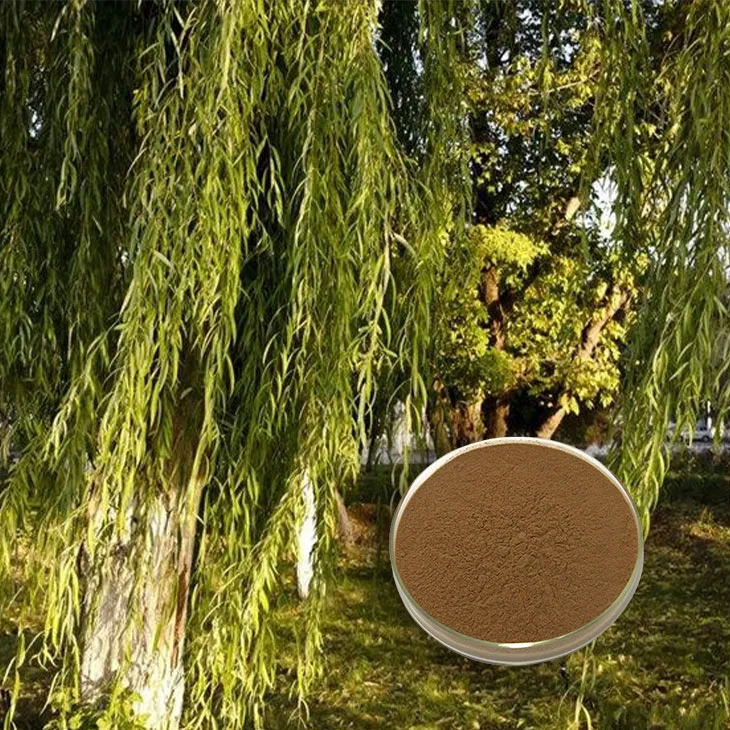- 0086-571-85302990
- sales@greenskybio.com
Standard - process white willow bark extract.
2024-11-29

Introduction to White Willow Bark Extract
White Willow Bark Extract has a long - standing history in traditional medicine, stretching back over centuries. It has been valued for its various medicinal properties and has been an important part of the natural remedy repertoire. This extract is sourced from the bark of the white willow tree, which is native to certain regions of Europe and Asia. The use of white willow bark in traditional medicine is not a recent phenomenon; rather, it has been passed down through generations, with different cultures recognizing its potential benefits.

Active Ingredient: Salicin
The most significant component of White Willow Bark Extract is salicin. Salicin is what gives the extract its analgesic (pain - relieving) and anti - inflammatory properties. Interestingly, salicin has a similar mode of action to aspirin. However, white willow bark extract is considered a more natural alternative. When compared to synthetic drugs, it may be preferred by those who are more inclined towards natural remedies. Salicin is converted in the body to salicylic acid, which is responsible for the anti - inflammatory and pain - relieving effects. This conversion occurs naturally within the body's metabolic processes.

Benefits in Skincare
Soothing Irritated Skin
In the realm of skincare, white willow bark extract is a valuable ingredient. One of its primary functions is to soothe irritated skin. Skin can become irritated due to various factors such as environmental pollutants, harsh chemicals in skincare products, or even allergens. The anti - inflammatory nature of the white willow bark extract helps to calm down the irritated skin cells. It works by reducing the production of inflammatory mediators in the skin. These mediators are substances that are released when the skin is irritated and are responsible for the redness, swelling, and discomfort associated with irritated skin.
Reducing Redness
Another important benefit in skincare is its ability to reduce redness. Redness in the skin can be a sign of inflammation, whether it is due to a minor skin injury, acne, or other skin conditions. White willow bark extract targets the underlying cause of the redness, which is often inflammation. By reducing the inflammation, it helps to minimize the appearance of redness. This makes it a useful ingredient in products designed for sensitive skin or for those with skin conditions that are characterized by redness, such as rosacea.

Uses in Herbal Medicine
Relieving Minor Aches and Pains
In herbal medicine, white willow bark extract has been used to relieve minor aches and pains. Joint pain, which can be caused by factors such as aging, overuse, or arthritis, can be alleviated to some extent by the use of this extract. The salicin in the extract acts on the pain receptors in the body, reducing the perception of pain. Similarly, muscle soreness, which often occurs after exercise or physical exertion, can also be relieved. The anti - inflammatory properties of the extract help to reduce the swelling and inflammation in the muscles, which in turn reduces the soreness.

The Importance of Standardized Extraction
Consistency in Active Ingredient Levels
Manufacturers are increasingly focusing on standardizing the extraction of white willow bark extract. This is crucial because it ensures that there are consistent levels of active ingredients in the final product. Consistent levels of salicin, for example, are essential for the product to have the expected analgesic and anti - inflammatory effects. Without standardization, the amount of salicin in different batches of the extract could vary widely, leading to unpredictable results in terms of efficacy.
Ensuring Product Safety
Standardized extraction also plays a vital role in ensuring the safety of the product for consumers. By controlling the extraction process, manufacturers can ensure that harmful substances are removed or minimized. Additionally, standardization helps to avoid over - concentration of the active ingredient, which could potentially lead to adverse effects. For example, if the salicin concentration is too high, it could cause unwanted side effects similar to those of taking too much aspirin, such as stomach irritation. By maintaining a proper and standardized extraction process, the safety of the white willow bark extract product is enhanced.
The Extraction Process
Collection of White Willow Bark
The first step in the extraction process is the collection of white willow bark. This is typically done in a sustainable manner to ensure the long - term availability of the white willow tree. Bark is carefully harvested from mature trees, usually during a specific time of the year when the concentration of active ingredients is at its peak. Harvesters need to be trained to identify the appropriate trees and to harvest the bark without causing excessive damage to the tree.
Preparation of the Bark
Once the bark is collected, it needs to be prepared for extraction. This involves cleaning the bark to remove any dirt, debris, or other contaminants. The bark may be dried or processed in some other way to make it suitable for the extraction process. Drying the bark can help to preserve it and also concentrate the active ingredients to some extent.
Extraction Methods
There are several methods that can be used for the extraction of white willow bark extract. One common method is solvent extraction. In this method, a suitable solvent, such as ethanol or water, is used to dissolve the active ingredients from the bark. The solvent is then separated from the bark, leaving behind a solution that contains the extract. Another method is supercritical fluid extraction, which uses a supercritical fluid, such as carbon dioxide, as the extracting agent. This method has some advantages, such as being more environmentally friendly and producing a purer extract. However, it also requires more specialized equipment.
Purification and Standardization
After the extraction, the resulting extract needs to be purified to remove any impurities. This can be done through various filtration and separation techniques. Once purified, the extract is standardized to ensure the desired levels of active ingredients. This may involve adjusting the concentration of salicin or other components to meet the required specifications. Standardization is a crucial step to ensure the quality and efficacy of the final product.
Quality Control in White Willow Bark Extract Production
Testing for Active Ingredients
Quality control in the production of white willow bark extract begins with testing for active ingredients. Analytical methods are used to determine the amount of salicin and other important components in the extract. This is typically done using techniques such as high - performance liquid chromatography (HPLC). By accurately measuring the levels of active ingredients, manufacturers can ensure that the product meets the required standards.
Testing for Purity
In addition to testing for active ingredients, the purity of the extract is also tested. This involves checking for the presence of contaminants such as heavy metals, pesticides, and other harmful substances. Various laboratory tests are available to detect these contaminants. Ensuring the purity of the extract is essential for the safety of the product. If the extract is contaminated, it could pose a risk to the health of consumers.
Stability Testing
Stability testing is another important aspect of quality control. This involves subjecting the white willow bark extract to different environmental conditions, such as temperature, humidity, and light, to see how stable it is over time. Stable products are less likely to degrade or lose their efficacy. By conducting stability tests, manufacturers can determine the shelf - life of the product and also make any necessary adjustments to the formulation to improve its stability.
Market Trends and Consumer Demand
Increasing Popularity of Natural Remedies
There has been a growing trend in recent years towards the use of natural remedies, and white willow bark extract is no exception. Consumers are becoming more aware of the potential benefits of natural ingredients and are increasingly seeking out products that contain them. This trend is driven by factors such as a desire for more holistic approaches to health, concerns about the side effects of synthetic drugs, and an increased interest in sustainable and natural products.
Demand in the Skincare and Herbal Medicine Industries
The skincare and herbal medicine industries are two major areas where the demand for white willow bark extract is on the rise. In the skincare industry, the demand is driven by the need for effective and natural ingredients to address various skin concerns. In herbal medicine, the extract is being used more widely in the formulation of products for pain relief and inflammation reduction. As a result, manufacturers are responding to this demand by increasing their production of white willow bark extract - based products.
Future Prospects
Research and Development
There is still much room for research and development in the area of white willow bark extract. Future studies could focus on exploring new applications for the extract, such as its potential use in treating other medical conditions. Additionally, research could be aimed at further optimizing the extraction process to improve the quality and yield of the extract. By investing in research and development, the potential of white willow bark extract could be fully realized.
Expansion in the Market
As consumer demand continues to grow, there is the potential for expansion in the market for white willow bark extract. This could lead to increased availability of products containing the extract, both in the domestic and international markets. However, with this expansion comes the need for strict quality control and regulatory compliance to ensure that consumers are getting safe and effective products.
FAQ:
What are the main benefits of standardized white willow bark extract?
Standardized white willow bark extract is rich in salicin, which has analgesic and anti - inflammatory properties. It can relieve pain like aspirin but is a natural alternative. In skincare, it soothes irritated skin and reduces redness. In herbal medicine, it can be used to relieve minor aches and pains such as joint pain and muscle soreness.
How is the white willow bark extract standardized?
The specific methods of standardizing white willow bark extract can vary among manufacturers. Generally, it involves precise extraction techniques to ensure consistent levels of active ingredients like salicin. This may include careful selection of raw materials, controlled extraction conditions such as temperature, pressure, and solvent use, and subsequent purification and analysis steps to verify the concentration of the desired components.
Is standardized white willow bark extract safe for everyone?
While white willow bark extract is a natural product, it may not be safe for everyone. Some people may be allergic to it. Also, it has similar properties to aspirin, so those with aspirin sensitivities or certain medical conditions (such as bleeding disorders or on blood - thinning medications) should consult a healthcare provider before using it. However, when standardized and used properly, it is generally considered safe for most healthy individuals.
Can standardized white willow bark extract replace aspirin?
Although it has similar analgesic and anti - inflammatory properties to aspirin, it cannot completely replace aspirin. Aspirin has been extensively studied and is widely used in medical settings for various purposes such as preventing heart attacks. White willow bark extract can be a natural alternative for those looking for more natural remedies for minor aches and pains, but it has not been through the same level of comprehensive medical evaluation as aspirin.
How should standardized white willow bark extract be stored?
It should be stored in a cool, dry place away from direct sunlight. Follow the storage instructions on the product label, which may also recommend specific storage temperatures. Keeping it in a proper storage environment helps to maintain its stability and effectiveness over time.
Related literature
- Title: Standardization of White Willow Bark Extract: A Review of Current Methods"
- Title: "The Efficacy and Safety of Standardized White Willow Bark Extract in Pain Management"
- Title: "White Willow Bark Extract in Skincare: Standardization and Clinical Applications"
- ▶ Hesperidin
- ▶ citrus bioflavonoids
- ▶ plant extract
- ▶ lycopene
- ▶ Diosmin
- ▶ Grape seed extract
- ▶ Sea buckthorn Juice Powder
- ▶ Beetroot powder
- ▶ Hops Extract
- ▶ Artichoke Extract
- ▶ Reishi mushroom extract
- ▶ Astaxanthin
- ▶ Green Tea Extract
- ▶ Curcumin Extract
- ▶ Horse Chestnut Extract
- ▶ Other Problems
- ▶ Boswellia Serrata Extract
- ▶ Resveratrol Extract
- ▶ Marigold Extract
- ▶ Grape Leaf Extract
- ▶ blog3
- ▶ Aminolevulinic acid
- ▶ Cranberry Extract
- ▶ Red Yeast Rice
- ▶ Red Wine Extract
-
Coconut Water Powder
2024-11-29
-
Chia Seed Powder
2024-11-29
-
Polygonum Cuspidatum Extract
2024-11-29
-
Sophora Flavescens Root Extract
2024-11-29
-
Polygonum multiflorum extract
2024-11-29
-
Selenium yeast
2024-11-29
-
Bamboo Leaf extract
2024-11-29
-
Rose Hip Extract
2024-11-29
-
Citrus bioflavonoids
2024-11-29
-
Fig Extract
2024-11-29





















